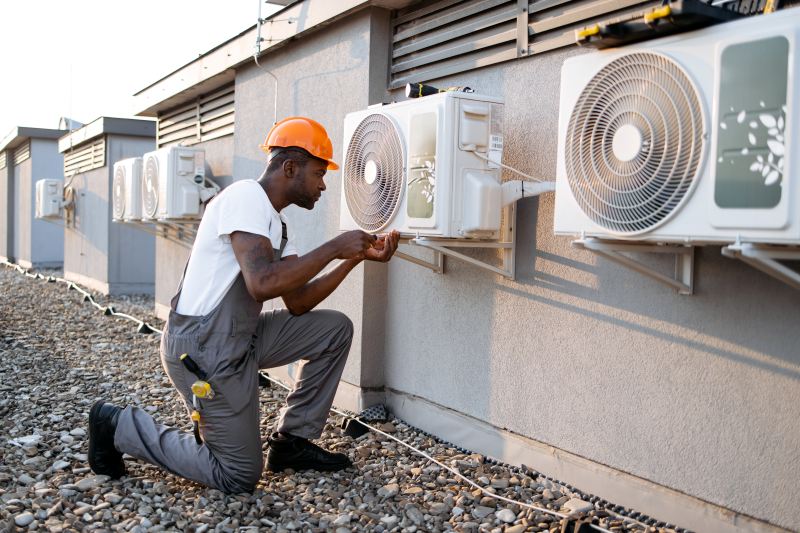Summer brings the promise of sun-soaked afternoons, beach escapes, and pool parties. It’s the season for BBQs and outdoor adventures—but also the time when indoor spaces start to feel like ovens. As temperatures rise, staying cool at home becomes less of a luxury and more of a necessity. This is especially true in places like Pinellas Park, FL, where summers are not just hot—they’re oppressive. Scorching days and muggy nights can make life indoors uncomfortable and even unhealthy if your home isn’t prepared.
Thankfully, there’s a lot you can do to beat the heat without overworking your AC or draining your energy budget. Whether you’re a homeowner or a renter, making a few smart home updates can turn your house into a summer-ready haven.
This guide breaks down seven essential fixes to help you stay cool under your roof all season long.
Ensure Your Plumbing Is in Top Shape
Summer heat makes access to cool water even more important. Whether it’s taking refreshing showers, washing off after a trip to the beach, or staying hydrated, your plumbing needs to work without fail. In Pinellas Park, FL, where high humidity and temperatures are a regular part of summer, reliable plumbing is even more important. Imagine coming home after a hot, humid day only to find that your shower isn’t working!
Any issues like slow drains, leaky faucets, or inconsistent water pressure can become frustrating fast. If you’re relying on cold showers to cool down, you need that water flow to be dependable. That’s where hiring a professional plumber comes in. Investing in one of the best plumbers in Pinellas Park, FL, will ensure that any problems that need fixing get fixed properly.
Professionals have the tools to check deeper parts of your system, prevent future issues, and ensure your water supply stays steady all season. Getting ahead of potential plumbing issues can mean the difference between comfort and chaos during a heatwave.
Seal Up Air Leaks Around the House
When your home struggles to stay cool, the problem might not be your air conditioner—it could be the air escaping from inside. Small leaks around windows, doors, and vents allow cold air to slip out and hot air to creep in. This doesn’t just make your cooling system work overtime; it also leads to higher energy bills.
Sealing up these gaps is a simple but highly effective fix. Check for drafts on a windy day. You can use a lit incense stick or even your hand to feel for moving air around frames and seals. Once you identify trouble spots, apply weather stripping or caulk to close the gaps. Don’t forget areas like attic hatches, dryer vents, and baseboards. These minor upgrades can make a big difference in your home’s ability to hold onto the cool air it produces, keeping your indoor spaces more comfortable throughout the summer.
Upgrade to Energy-Efficient Window Treatments
Your windows might be letting in more than just light—they could also be inviting heat. Direct sunlight can dramatically increase indoor temperatures, especially in the late morning and afternoon. The right window treatments can help you manage that heat.
Blackout curtains, solar shades, or even reflective blinds can reduce the amount of heat entering your home. These options block or reflect sunlight while still letting in natural light, so you don’t feel like you’re living in a cave. They’re especially helpful in rooms that get full sun. For even better results, combine them with exterior solutions like awnings or UV-reflective window films. The goal is to control how much heat gets in so your home stays cool without putting all the pressure on your air conditioner.
Service Your Air Conditioning System
Your AC is your best friend in the summer, but like any hardworking machine, it needs regular care. If you haven’t had it serviced in a while, now’s the time. A system that hasn’t been maintained is more likely to break down during peak usage—and no one wants that during a heatwave.
Routine maintenance includes cleaning or replacing air filters, clearing out any clogs in the drainage line, and checking for any worn-out parts. This ensures that the system runs efficiently and cools your home evenly. Many HVAC companies offer seasonal tune-ups, and while there’s a small cost involved, it’s far less than paying for emergency repairs or replacement.
Use Smart Thermostats for Better Control
Smart thermostats do more than just adjust the temperature. They learn your schedule, monitor your habits, and optimize your cooling routines. By automatically raising the temperature when you’re away and lowering it before you return, they make your home more energy-efficient and more comfortable at the same time.
Many models also come with companion apps that let you control settings remotely. So, if you’re out and the weather suddenly shifts, you can adjust the temperature before you get home. Some systems even use local weather data to anticipate changes. These small adjustments can lead to noticeable savings on your electricity bill, and you stay cool without constantly tinkering with the thermostat.
Cook Smarter to Avoid Heating Up the House
Your kitchen can be a major source of unwanted heat in the summer. Ovens, stovetops, and even some dishwashers add several degrees to nearby rooms, making it harder for your AC to keep up. When it’s already hot outside, the last thing you want is to make your home feel like an oven, too.
Try switching up your cooking habits during the summer months. Use outdoor grills, slow cookers, or countertop appliances like air fryers or pressure cookers, which generate less heat. Plan meals that don’t require extended cooking times—think salads, sandwiches, or cold pasta dishes. If you must use the stove, try doing so early in the morning or later at night when temperatures are lower.
Improve Ventilation in High-Humidity Areas
Heat is bad enough, but when combined with humidity, it can make your home feel stifling. Kitchens, bathrooms, and laundry rooms are common sources of extra moisture. Without proper ventilation, these areas trap humidity and spread it throughout the house.
Start by making sure all exhaust fans are in good working order. Run them while cooking, showering, or drying clothes to pull damp air out of the house. If your fans are outdated or ineffective, consider replacing them with newer, quieter models. You can also use small window fans to draw in cooler evening air or push hot air out. If your budget permits, installing an MVHR system can improve home ventilation and energy efficiency in the long run. Improving ventilation won’t lower the temperature directly, but it will reduce that sticky, heavy feeling that makes the heat so hard to tolerate.
Getting through summer comfortably doesn’t mean relying solely on your air conditioner. A smarter, layered approach can go a long way. These aren’t major improvements, but when all these adjustments work together, they make a big difference. The result? You feel better, spend less, and enjoy a cooler home environment no matter how high the temperature climbs.


